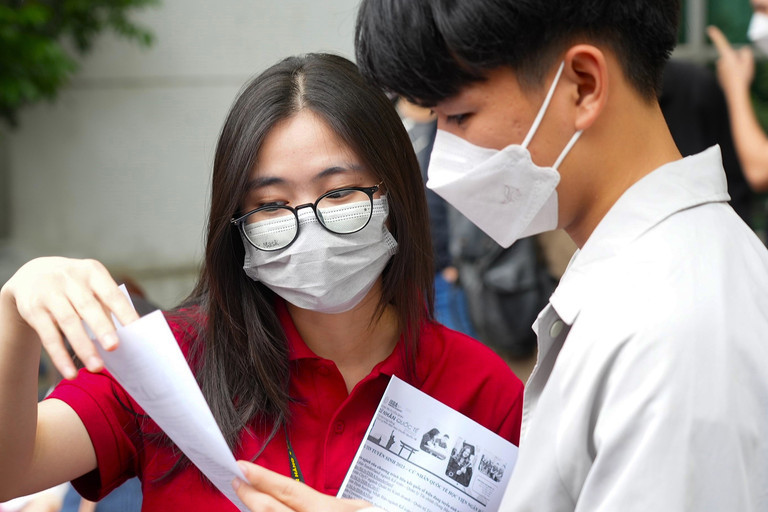
Universities have begun preparing for the 2024 enrollment season while trying to reform enrollment methods.
The National Economics University has announced that it will enroll students under three different methods. Under direct admission, students do not have to sit entrance exams; this will be used to enroll 2 percent of students. At least 18 percent of students will be admitted after considering the results of the high school final exam, and 80 percent of students will be selected via the school’s own admission method.
As such, the school will no longer choose students based on their high school transcripts. In previous years, 10 percent of students were enrolled under this method.
Hanoi Medical University has also said that it will not base admission on high school records this year.
Nguyen Dinh Duc from the University of Technology, a member school of the Hanoi National University, said that admitting students based on high school transcripts doesn’t allow schools to choose the best students.
Duc said it is difficult to ensure fairness if schools continue to apply this method, because teaching quality and student ability assessments vary at different schools and in localities.
Because of the differences in teaching staff quality, facilities, traditions, and prestige, it would be unfair to apply the same method to all students, he said.
“A student can be ‘excellent’ at one school, but may not be outstanding at another school that sets stricter requirements on students,” he explained.
Duc said that school reports are no longer an effective tool to measure student abilities. The number of good and excellent students now accounts for 90 percent of all students, a figure which appears to be unreliable.
Many schools tend to give high marks to students’ school work to pave the way for students to enroll in universities. And in many cases, teachers take bribes from students in exchange for giving high marks and fabricating learning records.
Therefore, many universities, especially those providing training in popular majors such as information technology, medicine and economics, have given up this enrollment method.
“If students with low capability are admitted to universities, they will do badly in their studies and have to give up, which is really a big waste of time and money for students, schools and society's resources,” he said.
In the long term, universities need to reform their enrollment methods to ensure they can choose the best students for their schools and that the method is suited to international practice, he said.
Hoang Ngoc Vinh, former Director of Professional Education Department under the Ministry of Education and Training, said that the enrollment scheme based on high school transcripts can "nurture" wrongdoings. He said that students can "buy" high scores from some teachers to "embellish" their high school learning records, which may help them more easily enroll in top-tier universities.
However, other education experts disagree with this view. They say school reports can more truly reflect the abilities of students because they show the entire process of studying, rather than certain exams that sometimes are a "game of chance".
But other experts argue that this is true only in theory. In reality, transcripts are not reliable and may not truly show students’ abilities in the current conditions. The so-called "achievement disease", or extreme eagerness to get the highest marks, can also lead to problems.
Vinh suggested that universities consider the results of the high school final exam and interview students to decide whether to admit them. This would be the best solution as it can fix these problems.
Le Dong Phuong, PhD, from the Vietnam Academy of Education Sciences, said the universities that have decided to remove school transcripts as an admission criterion are mostly top-tier and prestigious schools with high competitive ratios. This means that one student has to compete with many other students to obtain a seat at the school.
Analyses made over the years have found that average scores in high school reports are always higher than scores on the national high school final exam.
Surveys conducted by some universities have found that many students who were admitted thanks to their high grades in high school did not have good study outcomes.
Thanh Hung